How To Get Rid Of White Fungus In Soil
Fungi is an essential part of healthy soil. It sequesters carbon and breaks down organic matter so that nutrients become available for plants.
But not all fungi are good for your plants. Some species are pathogenic, which means they can cause disease in plants or humans.
So, how do you treat soil fungus?
There are various ways to treat pathogenic (bad) soil fungus. Some people choose to go down the pesticide route, using chemical or organic fungicides to kill harmful fungi. Others decide to promote healthier soil so that beneficial fungi will outcompete the undesirable kinds.
Now, you might have read some conflicting information about soil fungus before. That's because soil science is a fascinating and complex subject, making breakthroughs as we speak!
As a trainee soil technician, I hope to give you the most up-to-date information backed by science, without being so qualified that I've forgotten how to explain things to us 'normal' people.
This article will help you tell the difference between the fungi you want and the fungi you need to tackle.
I will give you some tips for treating fungi without using dangerous chemicals or making the problem worse in the long run!
What Does Fungus Look Like In Soil?
Soil fungus looks like white stringy clumps (think spaghetti) or fuzzy areas (think mold). A mushroom might pop up in the area, which is the fruit of a fungus.
There are millions of different fungi species. (Don't worry, you don't have to learn all the different kinds!) Like I mentioned before, some of them are beneficial (meaning you want them), and some of them are pathogenic (meaning you don't want them).
The good news is that you can nearly always tell which is which with the naked eye.
In general, the fuzzy-looking fungi are not good.
But the fungi with long thick strands are almost always beneficial.
So if you see these in your soil, you probably want to do a victory dance because that means your garden is thriving.
A healthy plant can typically hold back harmful fungi pretty well. The beneficial fungi help with this by creating a kind of armor for the plant roots. But once they are stressed, plants find it much more difficult to resist pests and diseases.
So make sure you take good care of your plant in general, watering the correct amount and exposing it to the right amount of light.
If fungi start attacking your plant, it's easier to identify them. (In the soil, many look exactly the same).
Here are some of the common pathogenic fungi types and how to identify them:
House Plant Fungus
Leaf Spot
You'll see discolored spots on your plant leaves (probably yellow or brown). Remove affected leaves immediately. If the problem persists, further treatment is needed.
Root and Stem Rot
A slow wilting of the plant may progress over many months. Leaves will lose their shine and turn yellow and limp.
Botrytis (AKA Bacterial Soft Rot)
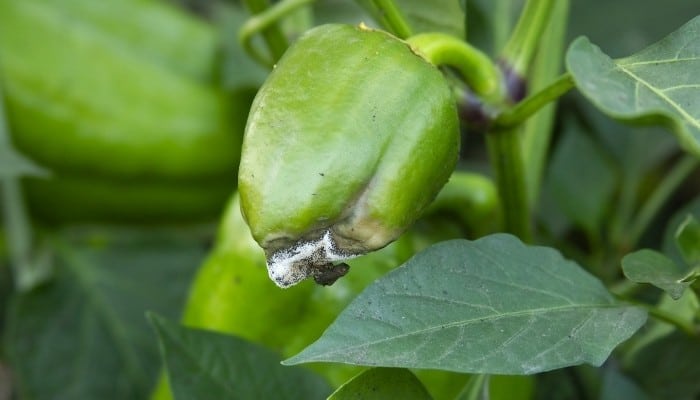
This parasitic fungus tends to attack fruits and young saplings. First, you will notice a part of your plant going brown, followed by a fuzzy brown growth.
Powdery mildew
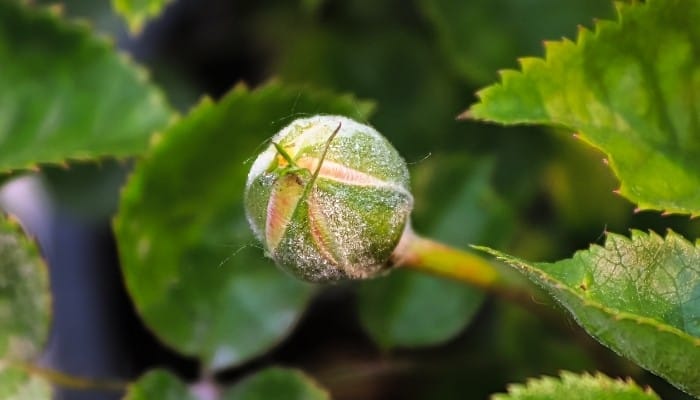
A dusty white 'powder' will appear on leaves. It usually starts on the underside, so regularly check your plants to avoid this taking over.
Garden Fungus
Garden plants can also have problems with the fungi I mentioned above. But here are a few more species that tend to attack outdoor plants.
Anthracnose
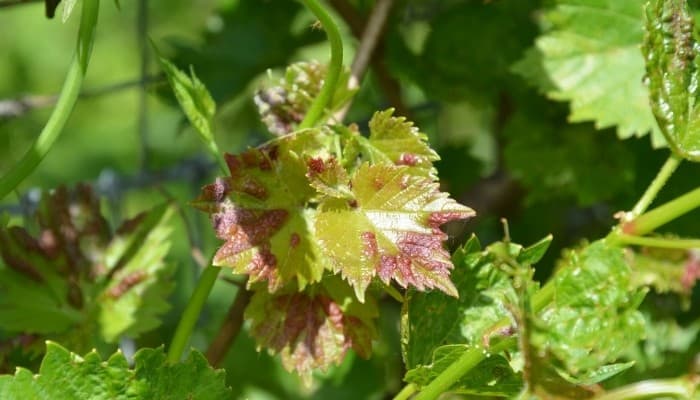
You'll notice a black stain on leaves, particularly leaves of fruit trees. It's unsightly, but it's not a particularly worrisome fungus.
Blight
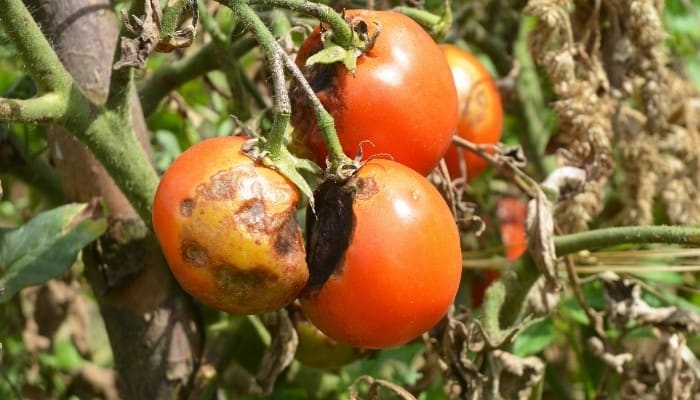
You'll notice brown spots on your plant or dark areas on flowers. As blight progresses, a fuzzy grey mold will colonize.
Rust
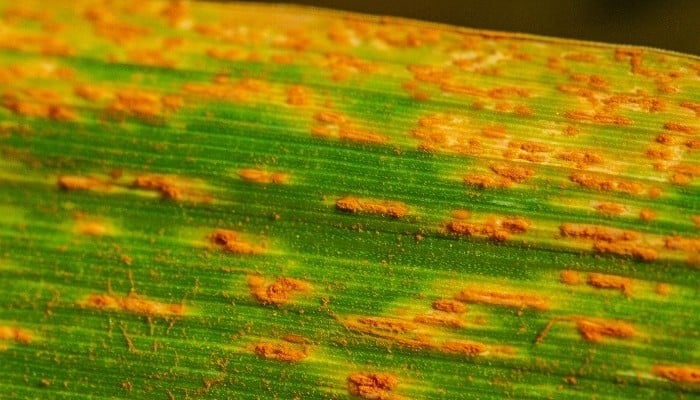
You'll see roundish blisters appearing on your plant stems. These 'blisters' are typically orangey-brown and are a particular problem for cereals.
Clubroot
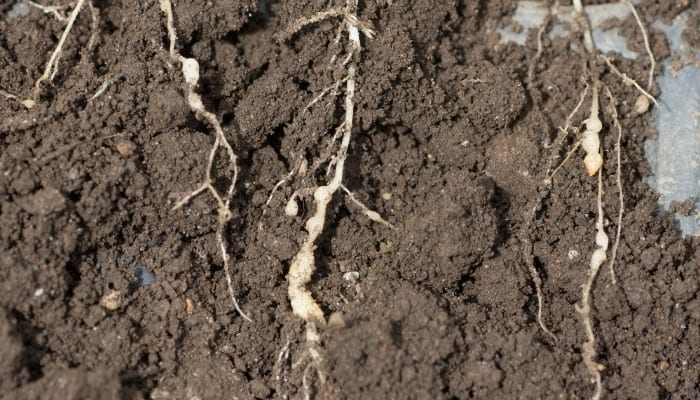
Below ground, it's straightforward to identify clubroot. The plant roots will be mutated and swollen.
But if you don't want to rip your plant up to check what's wrong with it, look out for more subtle signs like wilting. (Even if you're watering your plant enough, the damaged roots won't be using water effectively.)
What Causes Soil Fungus?
Soil fungus naturally occurs in the soil. The spores may be resting dormant in the earth for hundreds or even thousands of years. Then, when conditions are right, they will 'wake up' again.
Here are some of the things that might cause fungal problems in your plants:
Too Much Moisture In The Soil
Be careful not to overwater your plants. When watering, angle your hose or can at the plant base so that leaves aren't getting moist.
An Unbalanced Soil Community
You definitely want bacteria and fungi in your soil because they can act as 'body guards' for your plant against pathogenic fungi.
But if the microorganisms in your soil are not in balance, pathogenic fungi can get a foothold in the microscopic community.
An unbalanced soil is usually caused by using pesticides or by tilling. A solution to this would be to use organic, no-dig gardening methods.
To give credit where it is due; The Soil Food Web was discovered by Dr. Elaine Ingham. No-Dig gardening was pioneered by Charles Dowding.
Lack of Oxygen In The Soil
If your soil doesn't have enough oxygen, it becomes a breeding ground for pathogenic fungi and bacteria. This means the beneficial organisms can't compete with the harmful kinds, and the pathogens will take over.
To improve airflow in the soil, you don't want to let things get too compacted. Avoid heavy machinery when possible and use cover crops to protect bare soil from rainfall.
Using a rototiller might seem like the best way to deal with compaction, but it just fluffs up the topsoil and leaves an even harder compaction layer a few inches into the soil.
Unhealthy Potting Soil
Maybe you've been doing everything perfectly, but fungi are still attacking your plants. This is probably because the potting soil that you used was contaminated. So, it's important to find a good, trusted source of compost.
Compost isn't all the same, so don't hesitate to experiment with different sources.
Can Tou Test Soil For Fungus?
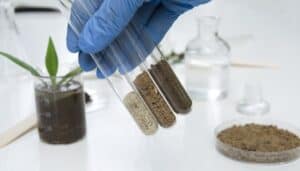 Yes, it is absolutely possible to test soil for fungus. For me, regularly testing my soil is one of the most important parts of gardening. (But I'm lucky enough to have microscope training, so I can just do it for myself!)
Yes, it is absolutely possible to test soil for fungus. For me, regularly testing my soil is one of the most important parts of gardening. (But I'm lucky enough to have microscope training, so I can just do it for myself!)
There are test kits that you can do at home, but they aren't very reliable. You would be better off contacting your local council and asking them if they have affordable soil testing programs.
Alternatively, you can send your sample off to a soil technician. Different labs are going to have different approaches, so try and find someone with a decent reputation.
Don't forget to send your sample in aerobic conditions; otherwise, you might get inaccurate results. (For example, put a little soil in a plastic bottle before packaging, so there's plenty of air space).
It's normal to have dormant pathogenic spores in your soil, and that's fine. But if you send your soil sample in a small container and the other microorganisms use up all the oxygen on the way, the soil will become a perfect environment for the harmful fungi to wake up.
It might be that at home, you don't have problems with these fungi, but the changes that happened in shipping made it seem like your soil is far less healthy than it actually is.
I would also test compost before using it in my garden, or at least find a composting operation that understands soil microorganisms. Municipal waste processing centers will also sell you 'compost.'
Usually, this will be sterile due to heat treatments. But if you don't have any bacteria or fungi in your compost, then any pathogenic fungi spores that come along are going to have free rein to multiply without a balanced soil keeping them in check.
How Do You Get Rid Of Fungus In Soil?
The best way to deal with fungus is to take preventative measures.
If you just let fungus take over and then spray your plants with fungicides, you're going to end up in a vicious cycle.
For every bad thing that you kill in your soil, you'll be killing just as many beneficial organisms that were helping out your plant.
Remember, you want fungi in the soil! There are many thousands of species that will make your garden healthier.
But if you notice any white fuzziness in the ground or symptoms of pathogenic fungi on your plants, you need to take some action.
Here are some ways that you can get rid of fungus:
Remove Diseased Leaves From Plants
Depending on how harmful the fungi are, you might be able to fix it by cutting off diseased leaves. You should also prune some of the healthier leaves too so that the plant can get more air flowing through.
Don't cut off more than 30% of the leaves, or your plant won't be able to photosynthesize effectively.
Improve Overall Conditions
Next, you need to ask yourself why the problem is happening.
If your soil is waterlogged, consider repotting plants. Alternatively, you might need to open greenhouse doors to let more air in.
You should also be rotating where you grow certain plant types to prevent pests and diseases from taking hold. Perhaps you should also avoid watering the leaves, or maybe you need to take better care of your soil.
Find a top-quality compost that can help reestablish a good community of microorganisms in your soil. If you're using lots of pesticides in your garden, you may have killed off the beneficial organisms, and you might need to rethink your strategies.
Consider Fungicides
I'm not saying fungicides are always a bad idea.
If fungi is a problem even after you've looked after the conditions and worked to take better care of your soil, the occasional use of fungicides can be helpful. Just remember that fungicides are a way to deal with symptoms, not the cause.
Save your plants with a human and pet-safe fungicide if you have to. But also ask yourself why the pathogenic fungi have been able to set up camp and get to the root of the problem.
Fix The Root Of The Problem
If fungi are a consistent problem for you, something is going wrong in the soil.
You should look into applying an excellent compost or compost tea. You also need to back off on using fungicides and investigate whether you have a problem with compaction.
This might seem like a lot of effort, but it's easier to get this sorted now than keep battling fungi for years into the future.
You'll probably save a lot of money because you don't have to buy expensive treatments for the fungi.
Will Baking Soda Kill Fungus In Soil?
Baking soda will kill fungus in the soil in large enough amounts, but it's best used as a foliar spray. Nevertheless, this is a good solution for somebody with an occasional problem with fungi.
I recommend using baking soda because it doesn't have the same health or wildlife implications that chemical fungicides can pose.
Using Baking Soda On Plant Fungus
- You can fill a spray bottle with water
- Mix in a few drops of vegetable oil
- Add a teaspoon of baking soda
- Mix the solution very well
- Spray topically on plants
After you've dealt with the fungus on the leaves, you would ideally respray the plant with a compost tea. This will replace the good bacteria and fungi that you just killed along with the pathogen and prevent the problem from reoccurring.
You could also sprinkle baking soda on areas of the soil where you can see fungus. But it will also kill the beneficial organisms. A better solution would be to dig any fungal areas out of the soil, break them up and sprinkle them over your compost heap.
The breaking, sunlight, and oxygen should kill it off without the need for baking soda.
Does Boiling Water Kill Fungus In Soil?
Boiling water will kill fungus in the soil. You can take the soil you want to use and then pour boiling water over it.
If you use enough boiling water, the soil will now be sterile, and you could use it for potting.
Please remember that the boiling water will have also removed many of the nutrients your plant requires.
If you then address this by using fertilizer, you might create a problem with fungus. If pathogenic fungi keep appearing in your soil, stop using fertilizer altogether.
Don't worry if this is beginning to sound complicated. It's going to take some time to learn how to work with nature, and that's okay.
Just take things day by day, and you'll feel more confident around soil fungus before you know it.
Will Vinegar Kill Garden Fungus?
Vinegar can sometimes kill garden fungus, but it can also damage your plants.
Most plants that are having problems with fungi are already weakened, so that last spray of vinegar might just be what finishes them off.
I would not recommend using vinegar in your garden. But if you had to choose between vinegar and a chemical fungicide, I would choose vinegar.
This is because it's cheaper, and it doesn't have the same health implications that inorganic chemical gardening inputs do.
That's A Wrap
Before you create your plan of attack, you need to consider whether the fungus you are seeing is beneficial or pathogenic.
You can help prevent pathogenic fungi by taking good care of your plant. This includes maintaining the right levels of moisture and sunlight, as well as allowing the beneficial microorganisms to perform their vital role in protecting your plant.
In some cases, treatment will be necessary. This can be as simple as removing infected leaves or using a non-toxic fungicide spray, or you might have to explore the root of the problem.
Putting in a little extra effort now can save you time, money, and stress in the future.
Recommended Reading
- Soil Biology Primer, Dr. Elaine Ingham
- Teaming With Fungi, Jeff Lowenfels
- Teaming With Microbes, Jeff Lowenfels
- Mycorrhizal Planet: How Symbiotic Fungi Work with Roots to Support Plant Health and Build Soil Fertility, Micheal Phillips
- Growing a Revolution: Bringing Our Soil Back to Life, David Montgomery
- No Dig Gardening, Charles Dowding
How To Get Rid Of White Fungus In Soil
Source: https://whyfarmit.com/soil-fungus/
Posted by: hendersonplat1974.blogspot.com



0 Response to "How To Get Rid Of White Fungus In Soil"
Post a Comment